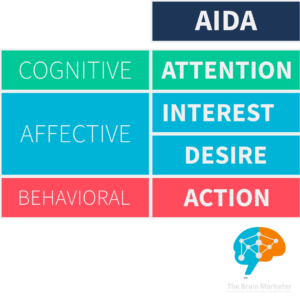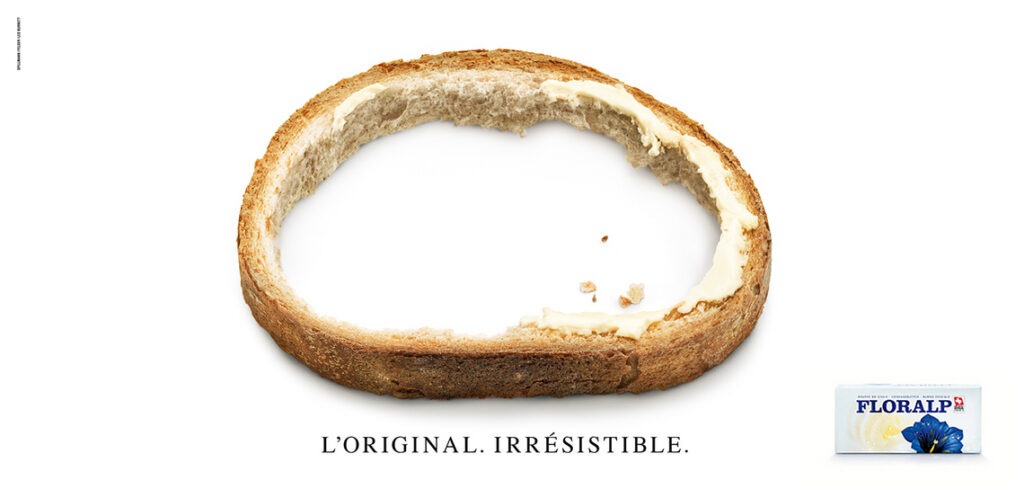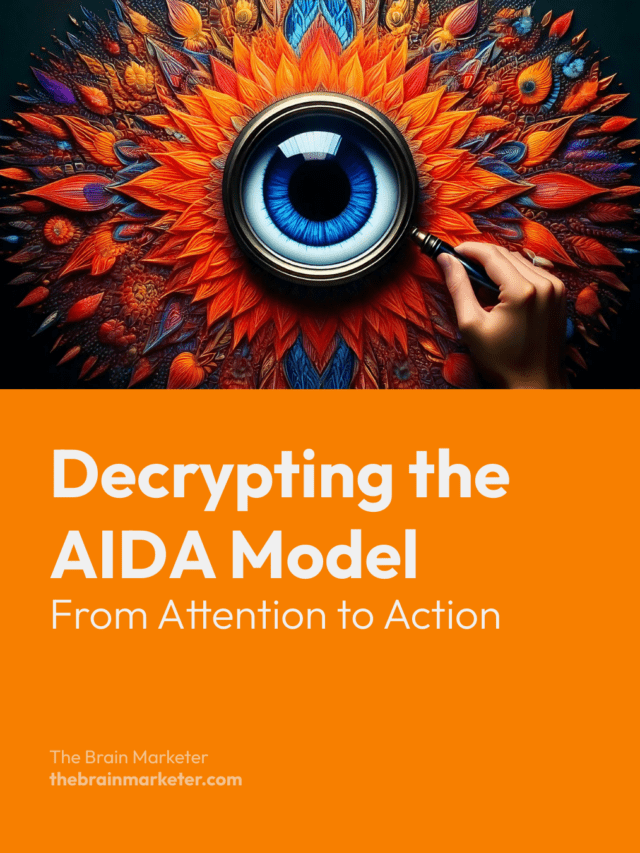Introduction
The AIDA model is a foundational marketing framework that stands for Attention, Interest, Desire, and Action. It describes the stages a consumer goes through when exposed to an advertisement or marketing message. This model helps marketers understand how to effectively capture and retain consumer attention, generate interest, create desire, and ultimately drive action, such as making a purchase. In this article, we explore each stage of the AIDA model in detail and examine how marketers can use this framework to influence consumer behavior effectively.
🎙️ Unpack the Topic with this Podcast
What Is the AIDA Model?
The AIDA model is a step-by-step process that aims to guide potential customers from the moment they first encounter a brand to the point of purchase. According to this model, consumer attitude towards a product or service is shaped by a series of factors that can either lead to a favorable predisposition towards buying or create a barrier that prevents the purchase.

Example: Imagine a marketing campaign for Floralp . The ad must first grab the consumer’s attention, spark interest in the product, create a desire to taste it, and finally encourage action—prompting the consumer to buy it. We will use this example throughout the article to illustrate each stage of the model.

| Attention | In this example, the strength of the attentional process lies in the visual creativity of the poster. The missing breadcrumbs give a glimpse of the landscape behind. |
| Interest | The designers played on the fact that consumers like to eat bread crumbs and often leave the crust on. |
| Desire | This nibbled slice of bread can create a craving for a slice of toast spread with Floralp butter. |
| Action | While this poster has a strong visual impact from a creative point of view, the action-related dimensions are more subdued. |
The Four Stages of the AIDA Model
1. Attention: Capturing the Consumer’s Focus
The first stage of the AIDA model is Attention. To effectively communicate a marketing message, it is crucial to first capture the consumer’s attention. This stage is particularly challenging due to the sheer volume of advertisements consumers encounter every day.
- Objective: Make sure your message is seen by the target audience.
- Techniques: Use eye-catching visuals, striking headlines, and other creative elements that stand out in a cluttered media environment.
Example with Floralp Butter: In the Floralp butter advertisement, attention is drawn through creative visuals—the absent part of the bread reveals a beautiful landscape behind it. This visual playfulness attracts attention due to its unexpected and unique nature, making the viewer stop and take notice.
Marketing Strategy:
- Use bold imagery and bright colors to grab visual attention.
- Employ unexpected elements or humor to stand out and create curiosity.
2. Interest: Engaging the Consumer
Once the consumer’s attention has been captured, the next step is to generate interest in the product. This is where the challenge lies, as consumers are often involved in other tasks and may not have an immediate need for the advertised product.
- Objective: Create interest in the product by providing compelling information or highlighting features that matter to the consumer.
- Techniques: Connect with consumers by addressing their needs or problems, using engaging storytelling, or showing how the product can add value.
Example with Floralp Butter: In the Floralp advertisement, the interest is generated by playing on a relatable insight—that many people love to eat the soft bread crumb while often ignoring the crust. This insight draws viewers in because it resonates with their own habits.
Marketing Strategy:
- Use consumer insights to highlight relatable situations that engage the audience.
- Provide interesting information about the product’s benefits that set it apart from competitors.
3. Desire: Creating a Want for the Product
After interest has been established, the goal is to move the consumer from being interested to actively desiring the product. This stage involves building an emotional connection that makes the consumer feel they want or need the product.
- Objective: Make the consumer want the product, transforming interest into a strong preference or longing.
- Techniques: Appeal to emotions, show benefits, and create an aspirational image of what life could be like with the product.
Example with Floralp Butter: The desire is sparked by presenting an appetizing image of buttered toast. The visual of a partially eaten slice of bread, alongside the buttery texture of Floralp, evokes a craving, making the viewer imagine enjoying a similar experience.
Neuromarketing Insight: The primal brain is particularly responsive to visuals of food and comfort. By displaying a delicious slice of buttered bread, the advertisement triggers feelings of pleasure and comfort, making the consumer desire the product.
Marketing Strategy:
- Use imagery that evokes the senses—such as pictures of the product in use—to appeal to the consumer’s desires.
- Highlight how the product can improve the consumer’s quality of life or bring comfort and joy.
4. Action: Prompting the Consumer to Act
The final stage is Action, where the goal is to turn consumer desire into concrete behavior—such as making a purchase, signing up for a service, or visiting a store. This is the ultimate goal of any marketing campaign.
- Objective: Motivate the consumer to take action that leads to a purchase.
- Techniques: Include a clear call to action (CTA), such as “Buy Now,” “Order Today,” or “Visit Our Store.” Offer promotions or limited-time deals to create urgency.
Example with Floralp Butter: In the Floralp advertisement, while the attention, interest, and desire elements are well-executed, the call to action is less prominent. This means that while consumers may have a positive perception of the butter, they may not feel an immediate push to buy it.
Marketing Strategy:
- Use a strong CTA to guide consumers on what to do next. This could include directing them to a nearby store or offering a discount coupon.
- Create urgency by including a time-sensitive offer, such as a limited-time discount.
Applying the AIDA Model in Marketing Campaigns
The AIDA model provides a structured way to guide consumers through the decision-making process. Marketers should ensure that each stage of the model is effectively addressed to maximize the chances of converting attention into action.
Conclusion
The AIDA model is a powerful tool that helps marketers effectively lead consumers from awareness to action. By focusing on grabbing attention, generating interest, creating desire, and prompting action, brands can influence consumer behavior in a structured and impactful way. Whether your goal is to increase awareness of a new product or to encourage immediate purchases, applying the AIDA model will help ensure that your message resonates at every stage of the consumer journey.

Vincent Heimann is a marketing project manager and neuromarketing enthusiast. He founded The Brain Marketer to bridge neuroscience and marketing through accessible, science-based content. With over 10 years of experience in digital strategy, UX/UI and communication, he shares practical insights to help brands connect with the human brain — ethically and effectively

